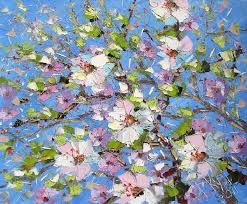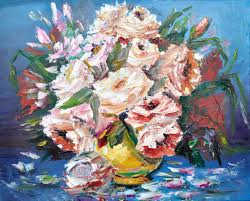members
ART UNIONS AND CREATIVE UNIONS OF RUSSIA ON THE TURN OF THE XIX-XX CENTURIES (part 3)
 “Bauhaus” (German: Bauhaus – building house) – art educational institution and creative association in Germany. It was founded in 1919 by the architect V. Groppius in Weimar, in 1925 it was transferred to Dessau, in 1933 it was abolished by the fascist authorities. The leaders of the Bauhaus (H. Mayer, J. Albers and others), relying on the aesthetics of functionalism, set out to develop new principles of shaping in plastic arts; they strove for a comprehensive artistic solution to the domestic environment, developed the ability of students to creatively comprehend new materials and designs, and taught them how to create solid and practical products. A significant place was given to design teaching. The main link of the educational process at the Bauhaus was the students’ labor practice in production, art and design workshops, where, along with studies and studies, they created architectural projects, decorative plastic works, and samples of mass household products. Continue reading
“Bauhaus” (German: Bauhaus – building house) – art educational institution and creative association in Germany. It was founded in 1919 by the architect V. Groppius in Weimar, in 1925 it was transferred to Dessau, in 1933 it was abolished by the fascist authorities. The leaders of the Bauhaus (H. Mayer, J. Albers and others), relying on the aesthetics of functionalism, set out to develop new principles of shaping in plastic arts; they strove for a comprehensive artistic solution to the domestic environment, developed the ability of students to creatively comprehend new materials and designs, and taught them how to create solid and practical products. A significant place was given to design teaching. The main link of the educational process at the Bauhaus was the students’ labor practice in production, art and design workshops, where, along with studies and studies, they created architectural projects, decorative plastic works, and samples of mass household products. Continue reading
ART UNIONS AND CREATIVE UNIONS OF RUSSIA ON THE TURN OF THE XIX-XX CENTURIES (part 1)
 Abramtsevsky (Mamontovsky) art circle – the so-called Representatives of the creative intelligentsia, mainly Moscow, united around the famous businessman and philanthropist S.I. Mamontov. Meetings and meetings of artists and art lovers took place in Mamontov’s house on Spassko-Sadovaya Street, and in the summer, in the Abramtsevo estate near Moscow near Sergiev Posad. Mamontov financially helped artists, supported them with many creative endeavors. The circle existed in 1878-93, while it was never an official society or an art group. Artists often came to Abramtsevo for the whole summer with their families. Here they could work and communicate. In the Abramtsevo circle, the study of Russian history and culture was combined with the desire to revive the traditions of folk art. The estate organized workshops for the revival of ancient art crafts (wood carving, majolica, sewing). Continue reading
Abramtsevsky (Mamontovsky) art circle – the so-called Representatives of the creative intelligentsia, mainly Moscow, united around the famous businessman and philanthropist S.I. Mamontov. Meetings and meetings of artists and art lovers took place in Mamontov’s house on Spassko-Sadovaya Street, and in the summer, in the Abramtsevo estate near Moscow near Sergiev Posad. Mamontov financially helped artists, supported them with many creative endeavors. The circle existed in 1878-93, while it was never an official society or an art group. Artists often came to Abramtsevo for the whole summer with their families. Here they could work and communicate. In the Abramtsevo circle, the study of Russian history and culture was combined with the desire to revive the traditions of folk art. The estate organized workshops for the revival of ancient art crafts (wood carving, majolica, sewing). Continue reading




